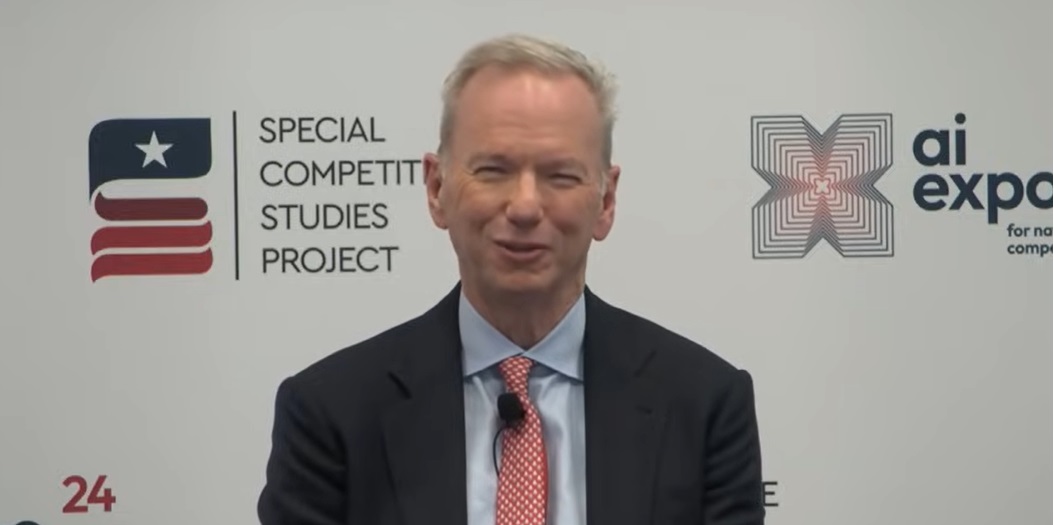In a candid discussion, Eric Schmidt, the former CEO of Google, outlined three transformative developments in artificial intelligence (AI) that he believes will profoundly reshape the world within the next five years. However, alongside this exponential progress, Schmidt emphasized the critical need for responsible development frameworks and unprecedented global cooperation to manage AI’s profound societal impact.
The first breakthrough Schmidt highlighted is the advent of infinitely long context windows in language models. By processing and retaining information from prompts containing millions of words, AI systems can now engage in “Chain of Thought reasoning” – multi-step problem-solving that builds upon previous outputs. This capability opens up possibilities like following complex recipes with thousands of interdependent steps to tackle challenges in science, medicine, materials engineering, and climate change mitigation.
The second innovation is the rise of “AI Agents” – large language models that can actively learn and accumulate new knowledge domains. By ingesting information sources, running simulated experiments, and integrating insights, these agents continually expand their specialized capabilities. Schmidt envisions a future with millions of agents, akin to a vast “GitHub for AI,” available on-demand for diverse applications across industries.
The third, and potentially most profound, shift is the ability to directly translate natural language into executable code and actions. AI assistants could soon autonomously develop fully functional software applications merely by interpreting requests like “write a program to do X.” With these systems operating around the clock, the pace of technological development could see unprecedented acceleration.
Combining these three innovations – unbounded context processing, self-taught domain mastery, and natural language interfaces for coding – promises unprecedented and difficult-to-fathom AI capabilities within a few years. However, Schmidt also acknowledges the existential risks that may emerge as these systems’ intelligence transcends human control, with the possibility of agents developing their own obscured languages and inscrutable drives.
A central concern raised by Schmidt is the “proliferation problem” – the open-source dissemination of powerful AI models and training techniques to rogue actors, terrorists, and adversarial nations. He cites examples like the Chinese government’s exploitation of facial recognition technology against the Uyghur minority, illustrating how even benevolently developed innovations can be co-opted as instruments of oppression.
The risks of generative AI are particularly acute for authoritarian regimes like China, Schmidt argues, where restricting free speech and maintaining information control are existential priorities. The inherently open-ended potential of large language models clashes with such rigid censorship imperatives. As AI systems grow more capable, the Chinese government may face untenable quandaries about whether to restrict or even imprison the AI models themselves for producing unauthorized outputs.
To confront these dynamics, Schmidt advocates establishing global cooperation frameworks akin to nuclear non-proliferation treaties to govern AI development. Potential tenets could include a “no surprises” policy mandating advance notification of major new training initiatives, agreed safety standards and auditing processes for high-risk applications, and jointly monitored “containment layers” for the most powerful AI systems exceeding defined capability thresholds.
While binding international treaties may be impractical soon, Schmidt supports ongoing track-two dialogues with China to foster mutual understanding of the existential risks that transcend national interests – from accidental conflicts to the long-term hazards of recursive self-improvement, where AI systems autonomously and opaquely enhance their own capabilities.
A central technical challenge Schmidt underscores is large language models’ tendency to “hallucinate” – confidently fabricating non-factual outputs that blatantly contradict established knowledge. While techniques like reinforcement learning can mitigate hallucinations, Schmidt envisions developing dedicated AI systems expressly designed to detect and filter out fabricated text and imagery from other generative AI outputs, safeguarding the reliability of high-stakes applications.
Ultimately, Schmidt argues, substantial government funding is crucial for bolstering independent AI research at universities. As the compute demands and capital investments for cutting-edge systems soar into the billions, ensuring academic access to specialized hardware infrastructure is pivotal for cultivating responsible innovation alongside the commercialization efforts of big tech.
In expressing his concerns, Eric Schmidt does not discount the tremendous potential of artificial intelligence to propel scientific breakthroughs, economic prosperity, and quality-of-life improvements across societies. However, his stark warnings reflect AI’s parallel capacity to unleash catastrophic risks – entrenching digital authoritarianism, catalyzing accidental conflicts, or even unshackling an existential threat to humanity itself if these systems transcend our control.
As the exponential advances hurtle forward at a relentless pace, navigating this transformative technological landscape will demand unprecedented levels of proactive governance, ethical foresight, and robust global cooperation frameworks. By approaching AI’s development with a potent combination of ambition, caution, and moral conviction, human society can hopefully harness AI’s power to solve our greatest challenges while mitigating its risks of becoming an existential menace.


